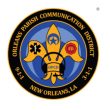NTIA: PSIC grant money can be used for narrowbanding
Public-safety agencies that must transition their LMR networks operating at frequencies below 512 MHz can used funds remaining in the Public Safety Interoperable Communications (PSIC) grant program to help pay for the upgrades, which the FCC requires to be completed by Jan. 1, 2013.
“We feel pretty great that there’s something available,” said Marilyn Ward, executive director the National Public Safety Telecommunications Council (NPSTC).
Ward said she received an e-mail from the National Telecommunications and Information Administration (NTIA) confirming that PSIC grant funds can be used to purchase narrowbanding equipment or to educate users about narrowbanding. PSIC funds cannot be used to pay FCC licensing fees, and the expenditures “must align with a state or territory’s previously proposed and approved PSIC investments,” according to the NTIA e-mail.
When TV broadcasters cleared 700 MHz spectrum, Congress allocated $1 billion in auction revenues to establish the PSIC grant program. Although the PSIC funds were distributed to the states in 2007, not all of the money has been expended, for a variety of reasons, according to industry sources. The leftover grant funds potentially could be used to pay approved narrowbanding costs.
With the FCC’s narrowbanding deadline less than 26 months away, many impacted public-safety agencies have expressed concern about their ability to pay for equipment that will allow their radio systems to transition from 25 kHz channels to 12.5 kHz channels to improve spectral efficiency. In a down economy, many cash-strapped agencies are looking for financial resources to pay for the unfunded narrowbanding mandate.
With this in mind, Ward said that NPSTC has established a narrowbanding working group that will seek alternative funding sources that agencies can tap to pay for narrowbanding. In the future, the group also will have a Web site, where it can share its findings with the public-safety community, she said.

















